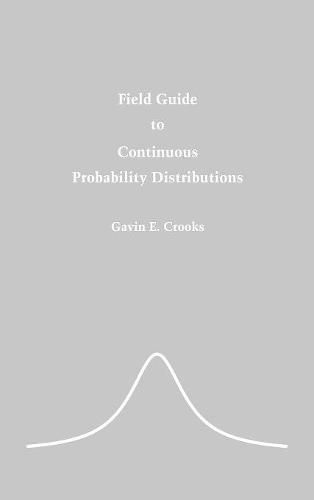Readings Newsletter
Become a Readings Member to make your shopping experience even easier.
Sign in or sign up for free!
You’re not far away from qualifying for FREE standard shipping within Australia
You’ve qualified for FREE standard shipping within Australia
The cart is loading…






This title is printed to order. This book may have been self-published. If so, we cannot guarantee the quality of the content. In the main most books will have gone through the editing process however some may not. We therefore suggest that you be aware of this before ordering this book. If in doubt check either the author or publisher’s details as we are unable to accept any returns unless they are faulty. Please contact us if you have any questions.
A common problem is that of describing the probability distribution of a single, continuous variable. A few distributions, such as the normal and exponential, were discovered in the 1800’s or earlier. But about a century ago the great statistician, Karl Pearson, realized that the known probability distributions were not sufficient to handle all of the phenomena then under investigation, and set out to create new distributions with useful properties.
During the 20th century this process continued with abandon and a vast menagerie of distinct mathematical forms were discovered and invented, investigated, analyzed, rediscovered and renamed, all for the purpose of describing the probability of some interesting variable. There are hundreds of named distributions and synonyms in current usage. The apparent diversity is unending and disorienting.
Fortunately, the situation is less confused than it might at first appear. Most common, continuous, univariate, unimodal distributions can be organized into a small number of distinct families, which are all special cases of a single Grand Unified Distribution. This compendium details these hundred or so simple distributions, their properties and their interrelations.
$9.00 standard shipping within Australia
FREE standard shipping within Australia for orders over $100.00
Express & International shipping calculated at checkout
This title is printed to order. This book may have been self-published. If so, we cannot guarantee the quality of the content. In the main most books will have gone through the editing process however some may not. We therefore suggest that you be aware of this before ordering this book. If in doubt check either the author or publisher’s details as we are unable to accept any returns unless they are faulty. Please contact us if you have any questions.
A common problem is that of describing the probability distribution of a single, continuous variable. A few distributions, such as the normal and exponential, were discovered in the 1800’s or earlier. But about a century ago the great statistician, Karl Pearson, realized that the known probability distributions were not sufficient to handle all of the phenomena then under investigation, and set out to create new distributions with useful properties.
During the 20th century this process continued with abandon and a vast menagerie of distinct mathematical forms were discovered and invented, investigated, analyzed, rediscovered and renamed, all for the purpose of describing the probability of some interesting variable. There are hundreds of named distributions and synonyms in current usage. The apparent diversity is unending and disorienting.
Fortunately, the situation is less confused than it might at first appear. Most common, continuous, univariate, unimodal distributions can be organized into a small number of distinct families, which are all special cases of a single Grand Unified Distribution. This compendium details these hundred or so simple distributions, their properties and their interrelations.